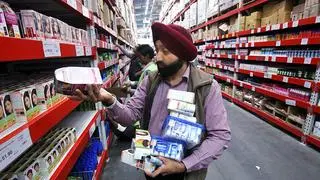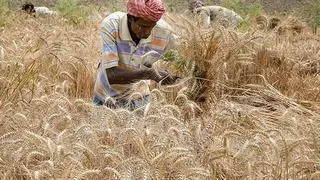The Indian textile industry and policy makers are too focused on incentive schemes for export promotion. This does not augur well for the industry particularly when World Trade Organisation (WTO) obligation will force India to phase out all its export incentives for the sector by end of 2015, says corporate economic advisor Ritesh Kumar Singh.
Competitive neighbours
He was speaking on the role of trade policy in pushing exports and safeguarding domestic markets threatened by the ever-growing low priced imports from countries such as Bangladesh and China.
Advising Texpreneurs (a forum formed by Tamil Nadu based textile entrepreneurs) against seeking such sops from the Government, Singh said: “A well-conceived trade pact can open up opportunities on the textile export front but a badly negotiated free trade pact can lead to unintended consequences.”.
Stating that the textile sector in India is a clear loser when it comes to trade with Bangladesh, he said “it’s time India imposed some sourcing restrictions for permitting duty-free import of garments from Bangladesh, as that country does not possess fabric manufacturing facilities. While this will help textile exports to Bangladesh, it will also check backdoor entry of Chinese fabrics to India via Bangladesh.”
Tariff disadvantage
Highlighting the implication of Trans Pacific Partnership (TPP) for textile export and import, he said: “We are at a disadvantage with regard to tariff; notwithstanding this, exporters from TPP member countries such as Vietnam get preferential access to the US market as compared to exporters from non-TPP countries like India, putting garments exports to the US in a difficult situation.”
“Similarly, the Yarn Forward Rule (YFR) makes it mandatory to source yarn, fabric and other inputs that are used in making clothes from TPP partner countries for availing duty preference. This will induce garment manufacturers in TPP countries to source their input from member nations, even if the suppliers in that region are not very efficient.
“TPP, therefore, is going to be the biggest challenge for the Indian textile industry as US accounts for close to a-fourth of India’s apparel exports and because of duty disadvantage with Vietnam, post the trade pact,” he said.
“Nevertheless, all is not lost. There are a few potential markets such as Brazil in Mercosur region that remain untapped. Inclusion of textile items under India-Mercosur Preferential Trade Agreement can help India’s exports, as textile items face prohibitive import duties ranging from 26 per cent to 35 per cent in Mercosur countries,” Singh said and advised the forum to seek Government help for providing marketing assistance to increase exports to Russia and other CIS countries.
Report
D Prabhu, Secretary of Texpreneurs Forum, told BusinessLine that they are in the process of submitting a report to the Central Government based on Singh’s suggestion and advice.







Comments
Comments have to be in English, and in full sentences. They cannot be abusive or personal. Please abide by our community guidelines for posting your comments.
We have migrated to a new commenting platform. If you are already a registered user of TheHindu Businessline and logged in, you may continue to engage with our articles. If you do not have an account please register and login to post comments. Users can access their older comments by logging into their accounts on Vuukle.